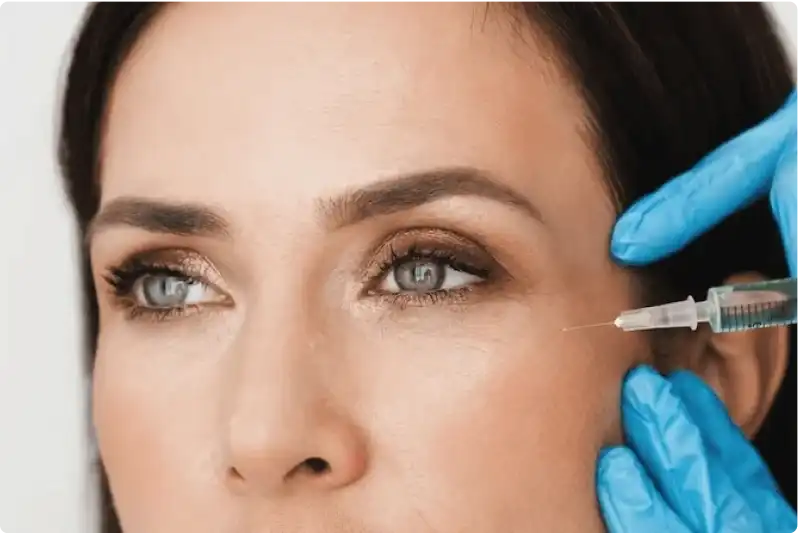Only for Licensed Professionals
Only for Licensed Professionals

How Long Does Nexplanon Last?
David Fuller
Last Updated On: September 16, 2025
Choosing the proper birth control often comes down to finding a balance between effectiveness, convenience, and personal preference. Some methods, like daily pills, require consistent attention, while others—known as long-acting reversible contraceptives (LARCs)—offer years of protection with little effort after placement. For many women, this hands-off reliability is a significant advantage.
One of the most popular LARCs is Nexplanon, a small, flexible implant inserted just beneath the skin of the upper arm. Once in place, it quietly provides highly effective pregnancy prevention for up to three years. Its discreet design and freedom from daily routines make Nexplanon an appealing option for those seeking both peace of mind and practicality.
In this article, we’ll explore how long Nexplanon lasts, how it works, and what factors can influence its effectiveness—helping patients and providers alike decide whether this implant is the right choice.
Key Takeaways
- Nexplanon is FDA-approved for 3 years of continuous use; replacement or removal is required afterward to maintain pregnancy protection.
- Some studies suggest that it may remain effective beyond 3 years. However, this is an off-label use in the U.S. and should be discussed with a healthcare provider.
- Factors like body weight, drug interactions, insertion technique, and metabolism can influence effectiveness, though most women remain fully protected through the approved duration.
- Timely replacement is essential since the implant does not signal when it’s expiring; reminders and follow-up visits help avoid contraceptive gaps.
- Compared to IUDs, which may last 3–10 years depending on type, Nexplanon offers a shorter but equally reliable option that is discreet, reversible, and convenient.
About: Operating since 2016, Med Supply Solutions is known for being one of the industry’s top and trusted suppliers of cosmetic and viscosupplementation products. If you’re looking to buy Nexplanon online, contact our sales department for more information.

Approved Lifespan of Nexplanon According to Guidelines

So, how many years is Nexplanon effective? According to the FDA and manufacturer guidelines, Nexplanon is officially approved for three years of continuous use. After this period, the implant must be replaced or removed to maintain reliable pregnancy prevention.
Studies show that etonogestrel levels slowly decline over time, which explains the clear three-year recommendation. Some research suggests that Nexplanon may continue working slightly beyond three years, but it’s important to note that using it past this point is considered off-label in the United States. Because of this, women are advised to discuss any extended use with a healthcare provider to ensure ongoing protection.
When compared to other long-acting options like intrauterine devices (IUDs), the difference in duration is clear. Copper IUDs can last up to 10 years, and hormonal IUDs between 3 and 7 years, which is why duration often becomes a deciding factor in the Nexplanon vs IUD conversation.
Factors That Influence How Long Nexplanon Remains Effective

While Nexplanon has a set lifespan of three years, a few personal and medical factors can influence its overall performance. These don’t usually shorten protection dramatically, but they’re important to consider during counseling:
- Body Weight and BMI: Higher body mass may slightly lower hormone concentrations, though current evidence shows Nexplanon remains effective for most women.
- Drug Interactions: Certain medications, including some treatments for epilepsy, tuberculosis, or HIV, can reduce Nexplanon’s hormone levels and make it less effective.
- Insertion Technique: Proper placement by a trained provider is essential to ensure the hormone is released consistently.
- Metabolism Variations: Individual differences in hormone metabolism can affect contraceptive reliability, though this impact is typically small.
By reviewing these factors, healthcare providers can set realistic expectations about Nexplanon’s contraceptive effectiveness and reassure patients that it remains highly reliable when used as directed.
Signs It’s Time to Replace Nexplanon
Unlike some devices, Nexplanon doesn’t give a physical signal that it’s about to expire. This makes timing and awareness essential. The most reliable sign is simply reaching the three-year mark, the FDA-approved duration of use. Beyond that point, the release of hormones gradually decreases, which means pregnancy protection may no longer be guaranteed.
Healthcare providers often encourage patients to set reminders—whether on a calendar, a phone app, or through follow-up appointments—so replacement or removal happens on time. Without this planning, some women unintentionally risk contraceptive gaps, leaving them vulnerable to unplanned pregnancy.
While expiration is the primary concern, other situations may warrant a check-in. Unexpected changes in bleeding patterns, for instance, may be unrelated to expiration but are worth evaluating. And of course, if a woman decides she’d like to become pregnant, removal can be scheduled at any time, regardless of how long the implant has been in place.
Patient Counseling on the Duration of Nexplanon
Clear, proactive counseling is the best way to help patients feel informed and confident about their contraceptive plan. During these conversations, providers should highlight several key points:
- Approved 3-year Duration: Nexplanon is effective for three years, after which replacement or removal is needed. Scheduling follow-ups in advance helps prevent lapses.
- Comparison with other Methods: Patients often ask how Nexplanon compares with IUDs. Providers can explain that while IUDs can last longer (up to 10 years for copper devices), Nexplanon offers a shorter but equally reliable option with the advantage of discreet placement in the arm.
- Fertility After Removal: Fertility usually returns quickly, often within weeks, which is reassuring for women who may want to conceive soon after discontinuing use.
- Side Effects and Lifestyle Considerations: Discussing possible side effects, such as irregular bleeding, alongside how Nexplanon fits into a woman’s daily life helps set realistic expectations and promotes satisfaction.
By offering straightforward information and encouraging questions, providers reduce anxiety about Nexplanon’s expiration, support timely replacement, and strengthen trust in the treatment plan.
Conclusion
Nexplanon is a highly effective and convenient contraceptive implant with a clearly defined three-year duration. While some studies suggest it may remain effective slightly longer, using it past the three-year point is off-label in the U.S. and should always be discussed with a healthcare provider.
Understanding differences in lifespan, maintenance, and replacement timing helps women and clinicians make decisions that fit both health needs and personal preferences. With proper counseling and timely monitoring, Nexplanon remains one of the most dependable choices for long-acting, reversible birth control.
FAQs
1. How long does Nexplanon last according to guidelines?
Nexplanon is approved for 3 years of continuous use. After this period, it must be replaced or removed to ensure ongoing contraceptive protection.
2. Can Nexplanon work beyond 3 years?
Some studies suggest effectiveness may extend slightly past 3 years, but official recommendations advise replacement at the 3-year mark for maximum reliability.
3. What happens if I don’t replace Nexplanon on time?
Delaying replacement increases the risk of pregnancy. It’s best to schedule removal and reinsertion promptly.
4. How quickly does fertility return after Nexplanon removal?
Fertility usually returns quickly, often within a few weeks. Many women can conceive shortly after removal if no other fertility issues are present.
References
Guttmacher Institute. Contraceptive use in the United States. Updated July 2023. https://www.guttmacher.org/fact-sheet/contraceptive-use-united-states
Better Health Channel. Contraception choices. Updated May 2023. https://www.betterhealth.vic.gov.au/health/healthyliving/contraception-choices
Jacobs M. Treatment duration for etonogestrel implant. AAFP. Published August 1, 2018. https://www.aafp.org/pubs/afp/issues/2018/0801/od3.html
Pollock DM. How effective is Nexplanon at preventing pregnancy? Published September 10, 2024. https://www.medicalnewstoday.com/articles/drugs-nexplanon-effectiveness
Products
Cart
Log In
Newsletter
Subscribe for exclusive offers and updates on new arrivals
Share feedback at:
Working Hours
MON - SUN 9AM to 6PM EST
The Most Popular Brands
Med Supply Solutions
Support
Secure checkout is guaranteed with full adherence to PCI DSS payment standards.
Products listed here are guaranteed authentic and manufacturer-sourced.
Pay easily with trusted providers


*Google and Apple Pay are currently only available via a direct link provided by your account manager.
Copyright 2025. Med Supply Solutions